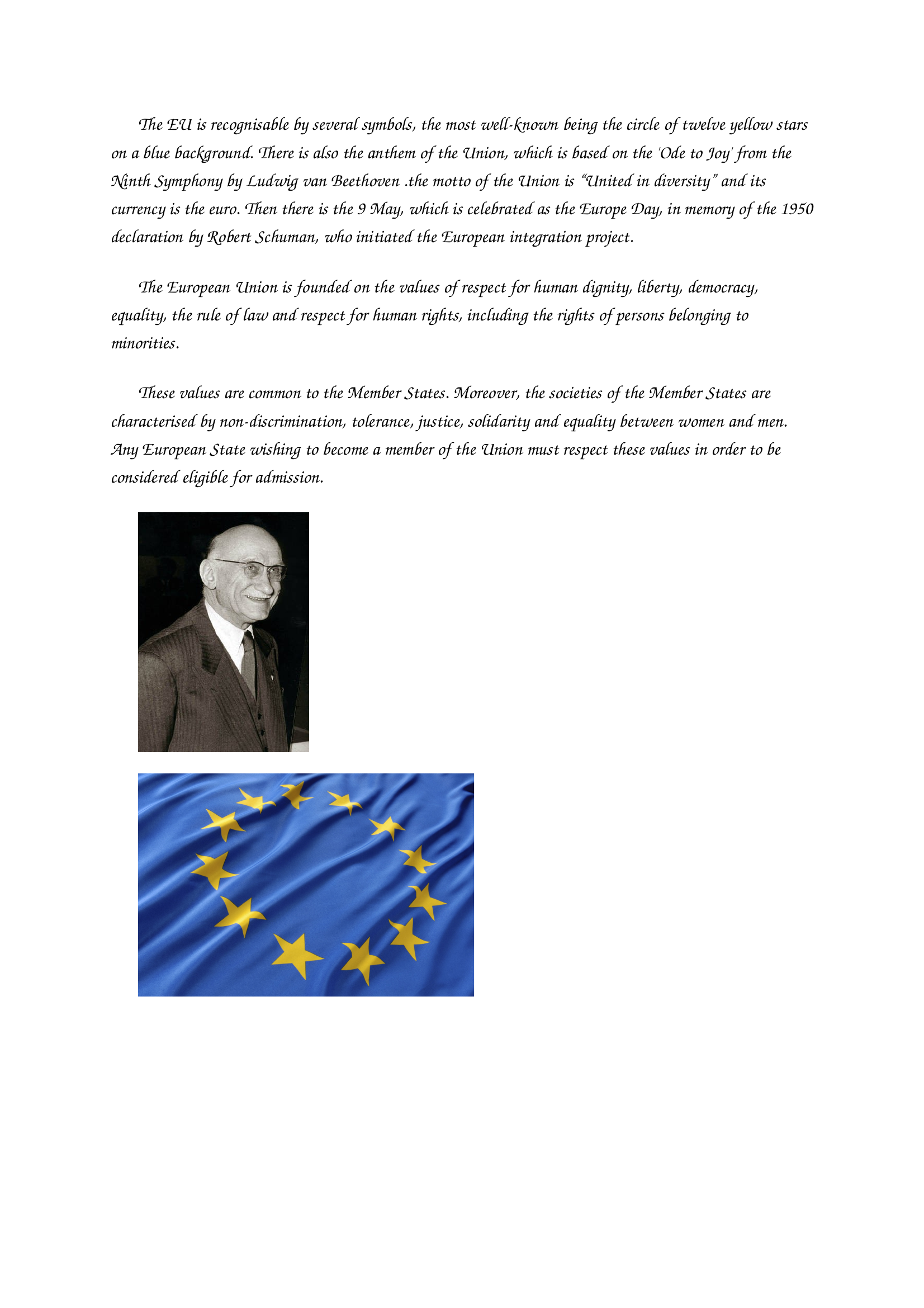the origins and the history of the european union
Publié le 30/01/2015

Extrait du document
«
The EU is recognisable by several symbols, the most wellknown being the circle of twelve yellow stars
on a blue background. There is also the anthem of the Union, which is based on the 'Ode to Joy' from the
Ninth Symphony by Ludwig van Beethoven .the motto of the Union is “United in diversity” and its
currency is the euro. Then there is the 9 May, which is celebrated as the Europe Day, in memory of the 1950
declaration by Robert Schuman, who initiated the European integration project.
The European Union is founded on the values of respect for human dignity, liberty, democracy,
equality, the rule of law and respect for human rights, including the rights of persons belonging to
minorities.
These values are common to the Member States. Moreover, the societies of the Member States are
characterised by nondiscrimination, tolerance, justice, solidarity and equality between women and men.
Any European State wishing to become a member of the Union must respect these values in order to be
considered eligible for admission..
»
↓↓↓ APERÇU DU DOCUMENT ↓↓↓
Liens utiles
- A member of the European Union since 1986, it is one of the poorest countries in Western Europe, but rapid changes and strong growth are ensuring that Portugal is gradually catching up.
- A member of the European Union, the Netherlands are the leading country for producing and exporting natural gas in Europe.
- Political conflicts are becoming increasingly apparent between those who want closer ties with the European Union and those who want more contact with the CIS.
- Ideology and Rationality in the History of the Life Sciences
- Pleione Greek Daughter of the Titans Oceanus and Tethys; a nymph, one of the eldest among the thousands of daughters born of this union who were themselves considered by many writers to be Titans.
























